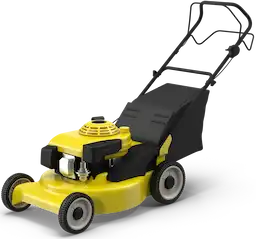When planning your next landscaping project, choosing between river rock or mulch if an essential decision. Both materials offer different aesthetics and functionality. River rock and mulch are the most popular options available. River rock adds a striking element to your landscape while being durable and low-maintenance. Mulch is an organic material that creates a natural look while providing nourishment and moisture retention to your plant beds.
The decision between the two heavily weighs on what benefits you need and other factors like cost and longevity. Get an instant price from LawnGuru for all your landscaping and lawn mowing needs. LawnGuru can help you with your landscaping project whether you decide to use river rock or mulch.
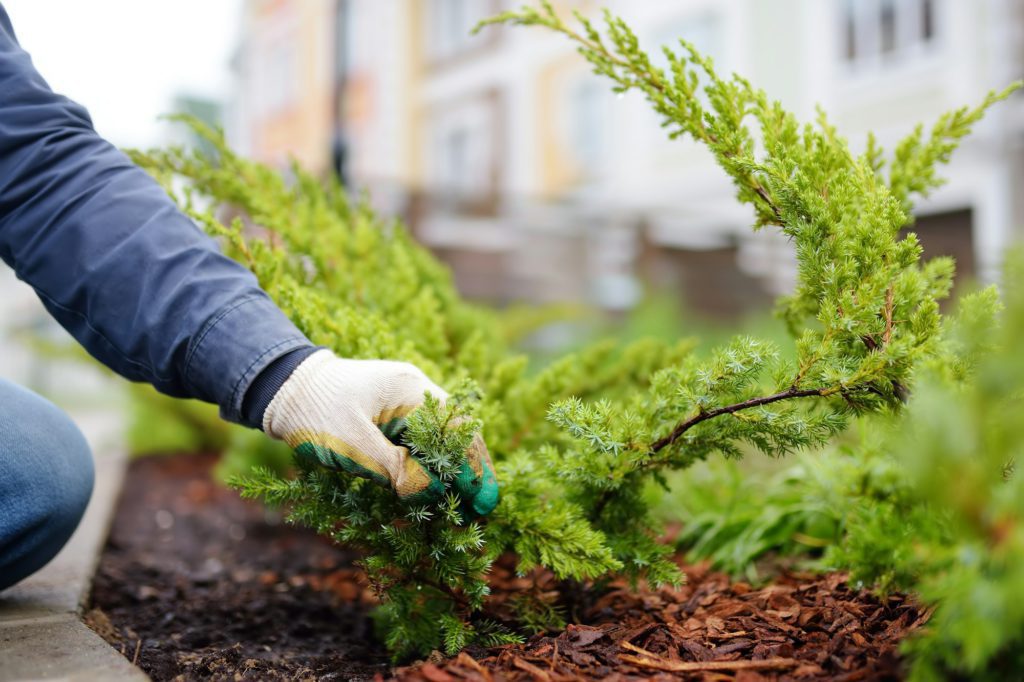
Introduction to Landscaping Materials
When designing a landscaped space, the choice of materials can significantly impact both the aesthetic of the space and its functionality. Materials like river rock and mulch are commonly used to enhance flower beds, pathways, and other landscaped spaces while also providing practical benefits. River rock has a smooth texture and comes in natural colors. It offers a clean, polished look that is often used in contemporary styled homes. Mulch, on the other hand, is made from organic materials and breaks down over time. Its rustic and adds a organic feel while enriching the soil over time and helping retain moisture around plants.
Exploring Landscaping Options
When planning your landscaping, selecting the right materials is a key step in the process. When determining what you’d like to use, consider your goal aesthetic, maintenance levels, and climate suitability. Among the many options available, river rock and mulch are the most widely used choices. River rock is composed of smooth, rounded stones in varying sizes and colors. Its also a very durable option as it doesn’t break down over time or wash away.
Mulch is typically made from organic materials like wood chips or bark. It provides a natural, earthy appearance but also benefits plant health by helping retail soil moisture and regulating soil temperature. However, mulch does require regular replenishment and may not be ideal in areas with heavy rainfall or wind.
Balancing Cost and Maintenance
When deciding between river rock and mulch for your landscaping, the initial cost of materials and installation as well as long-term maintenance are key factors to consider. River rock generally has a higher upfront cost, but it requires minimal maintenance over time. Once install, it can last for years without needing to be replaced, making it a cost-effective choice in the long run. On the other hand, mulch is typically more affordable initially, but it requires regular replenishment as it decomposes and breaks down over time. Mulch is often more expensive long-term because of the ongoing costs of reapplication and time spent maintaining it.
On average, mulch can cost between $17 and $68 per cubic yard. Cost varies depending on the type, color, and your region. Shredded bark is a popular choice for flowerbeds, with cedar bark being a top choice. The average cost is about $56 per cubic yard installed. Pine straw is one of the most inexpensive options. On average it costs about $4 per bale and covers about 50 square feet. Rubber mulch is more expensive, but a great choice for areas where kiddos play. This mulch will run you between $8 and $14 per cubic foot. While it’s pricey up front, rubber mulch will save you money in the long run because of how low maintenance it is.
Comparing River Rock and Mulch
River rock and mulch each have unique features, benefits, and drawbacks are important to consider when designing an outdoor space. River rock, known for its durability and versatility, adds a clean, polished look to any outdoor space. It’s an excellent choice for pathways and decorative borders. However, river rock can make planting difficult and it doesn’t offer the soil nourishment that organic materials provide.
Mulch, on the other hand, enriches the soil as it decomposes, promoting plant health by retaining moisture in the soil, regulating soil temperature, and suppressing weeds. Its natural, earthy appearance can add an organic feel to your flower beds. The drawback is that mulch is not ideal for areas with heavy rainfall or wind as it can be displaced easily.

River Rock Advantages
River rock offers several key benefits in landscaping, making it a popular choice for various outdoor projects. Its durability is one of its most significant advantages, as it can withstand the elements without breaking down, shifting, or needing frequent replacement. This low maintenance quality is ideal for those seeking a long-term solution with minimal upkeep. Aesthetically, river rock adds a clean, polished look that complements both modern and natural designs that provides texture and contrast. In hot climates, choosing a light colored river rock will help keep surrounding areas cool, as a lighter color retains less heat compared to darker materials. Lastly, river rock is more resistant to pests, which can be a concern with mulch.
River Rock Disadvantages
While river rock is a popular choice for landscaping due to its durability and visual appeal, it does come with some potential drawbacks. One of the main concerns is that river rock can hinder plant growth by compacting soil and limiting moisture absorption. Additionally, as the installation of river rock is labor intensive, it can be difficult to reverse if a change is desired. To mitigate these challenges, it’s important to use a landscape fabric beneath the rocks to prevent soil compaction and weed growth. When installing river rock, planning the layout carefully and considering future design changes can make future modifications easier.
Mulch Benefits
Mulch offers numerous benefits that make it an essential component in landscaping, particularly in colder climates. One of its primary advantages is soil enrichment; as organic mulch decomposes, it adds valuable nutrients back into the soil, promoting healthier plant growth. This natural process also helps improve soil structure and encourages the growth of beneficial microorganisms .
Additionally, mulch acts as an insulating layer, regulating soil temperature by keeping it warmer in the winter and cooler in the summer. This is especially beneficial for homeowners in colder climates like the Midwest and northern regions. Its ability to retain moisture further supports plant health by reducing the need for frequent watering.
Mulch is versatile in design, so it can be used to create a cohesive, natural look in garden beds, pathways, and around trees, with various types and colors available to suit different aesthetic preferences. These qualities and the variety of choice among mulch types, make it a practical and visually appealing choice for many homeowners.

Mulch Drawbacks
Mulch, while beneficial for many landscaping projects, comes with it’s own set up challenges that need to be manages to maximize its effectiveness. One of the primary issues is its need for frequent replacement, as organic mulch decomposes over time and loses its insulating qualities. This ongoing maintenance can be time consuming and costly. Additionally, mulch is susceptible to erosion, especially in areas with heavy rainfall or strong winds, which can cause the mulch to wash or blow away.
To mitigate these challenges, it’s important to apply mulch at the correct thickness, between 2 to 4 inches, to ensure adequate coverage without suffocating plants. Mixing river rock and mulch in your landscape to create an edge can also be benefit to keep the mulch in place and reduce the rick of erosion. In areas prone to heavy rainfall, selecting denser mulch types can also offer better stability.
Popular Mulch Options and Their Uses
Mulch is a versatile option that comes in various types and mulch colors, each with distinct characteristics. Organic mulches, such as wood chips, bark, straw, and compost, are popular for their soil enriching properties. Wood chips and bark mulch are long-lasting, making them ideal for garden beds and around trees. Straw and compost, on the other hand, bread down more quickly and are excellent for vegetable gardens, where they improve soil structure and fertility. Inorganic mulches, like rubber mulch, is a long-lasting alternative that requires minimal maintenance. Rubber mulch is often used in high-traffic areas, like playgrounds, because it provides cushioning and rarely needs replacement.
Shredded Bark: A Versatile Choice
Shredded bark mulch is likely the most popular choice of mulch, particularly in the Midwest. Shredded bark is often cost effective and easily found at retailers. One of its key benefits is its ability to interlock as it settles, creating a stable layer that resists erosion and stays in place. This makes it ideal for garden beds, pathways, and around trees, where it provides effective weed suppression and moisture retention.
Over time, shredded bark mulch naturally decomposes, enriching the soil with nutrients and improving its structure. This soil enrichment is especially beneficial in areas with clay-heavy soils, where the mulch helps to loosen and aerate the soil. Additionally, shredded bark mulch comes in a large variety of colors, from natural brown to dyed red or black, allowing homeowners to choose the best color for their landscape design.
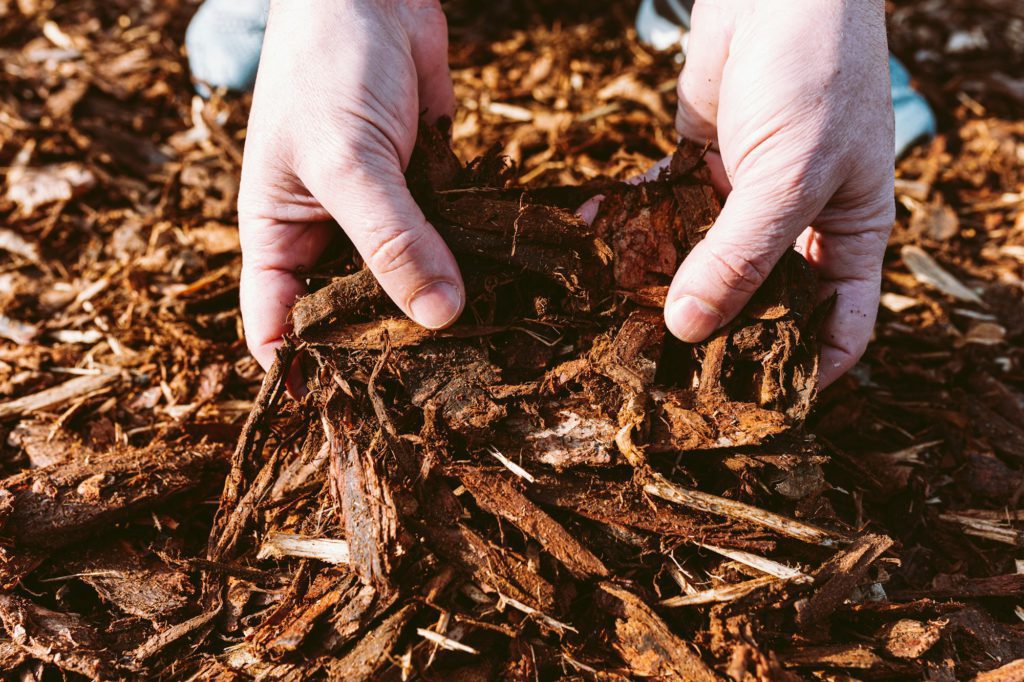
Pine Straw for Southern Landscapes
Pine straw is a distinctive mulch option that is particularly well suited for landscaping in the southern region of the United States. Derived from fallen pine needs, pine straw has a slow decomposition rate, allowing it to last longer than other options without frequent replacement. This durability makes it a cost effective and low maintenance choice for homeowners. One of pine straws standout features is its ability to stay in place on sloped areas, where other mulch might wash away. The needles interlock as they settle, forming a stable mat that helps prevent erosion on hillsides and uneven terrain.
Pine straw is also lightweight and easy to spread, making it convenient for covering large areas. Additionally, it provides excellent moisture retention, weed suppression, and a natural appearance that complements many Southern landscapes. Its combination of practicality and aesthetic appeal makes pine straw a favored mulch in Southern gardens, especially on challenging, sloped sites.
Rubber Mulch for Play Areas
Rubber mulch is often an ideal choice for playground due to its unique safety benefits and long-lasting nature. River rock and mulch used to be common in playground areas but since rubber mulch as become common, they’ve quickly been replaced for new and upgraded spaces. Rubber mulch is made from recycled rubber and absorbs shock better than traditional wood mulch. It provides a soft, cushioned surface that helps reduce the risk of injuries from falls, making it a safer option for children at play.
Additionally, rubber mulch is durable and weather resistant, ensuring it remains effective and visually appealing for years without requiring frequent replacement. It doesn’t decompose, compact, or blow away easily, minimizing the need for ongoing maintenance.
Exploring Rock Types for Landscaping
River rock comes in a variety of sizes, colors, and shapes, making it a versatile option for different landscaping designs. Pea gravel is one of the smallest options and consists of smooth, rounded stones about the size of peas. Its often used for pathways, patios, or in small garden beds. Medium sized river rocks, ranging from 1 to 3 inches, are perfect as decorative borders around trees and shrubs. Larger river rocks, often called cobbles or boulders, can be used as focal points in the landscape, such as in rock gardens or in water features. The variety of sizes and colors, from gray to white to tan or red, allows river rock to complement most designs.
Pea Gravel for High-Traffic Areas
Pea gravel is a popular type of river rock knows for its small, rounded stones that typically come in neutral tones like gray, brown, and white. Its compact size and soft texture makes it an ideal choice for areas with heavy foot traffic like walkways and patios. One of pea gravels key advantages is its affordability, making it a budget-friendly option for large areas. Additionally, pea gravel is easy to install and maintain, requiring minimal upkeep while effectively controlling weeds and providing drainage.
Flagstone and Brick Chips: Design Elements
Flagstone is often used for edging and pathways. Its irregular shapes and earthy tones create a timeless look that blends seamlessly with your other garden designs. Flagstone is durable and provides a stable surface, making it ideal for pathways that experience regular foot traffic. When used as edging, it effectively defines garden beds, walkways, and patio areas.
In contract, brick chips are a vibrant option for adding color and texture to garden beds and other landscaped areas. Their deep red or orange hues create striking contrast against greenery. Besides their aesthetic appeal, brick chips also offer practical benefits, such as retaining moisture in the soil, which helps to reduce the need for frequent watering. Their durable nature makes them a long-lasting ground cover that resists erosion and compaction, while adding both color and functionality to any landscape.
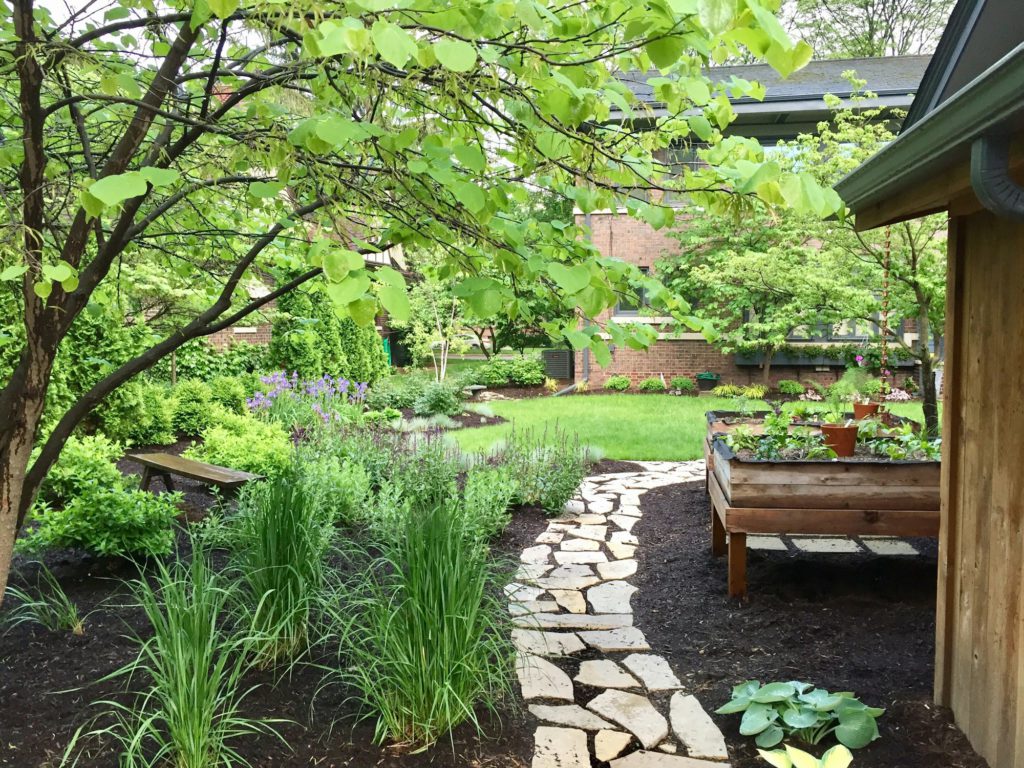
Lava Rock's Unique Properties
Lava rock is a popular choice due to its porous texture, as it provides drainage support, allowing water to flow through easily and preventing waterlogged soil. This is particularly benefits in areas with heavy rainfall or poor drainage. Additionally, lava rock serves as an effective weed suppressant, creating a barrier that helps minimize weed growth while maintaining a tidy appearance.
Lava rocks unique deep red or black color adds a bold, dramatic touch to garden beds, creating a visual contrast between it and the green plants. Beyond aesthetics, lava rock is also long lasting and low maintenance, making it a durable option that doesn’t break down or decompose like organic mulches.
Choosing the Right Option for Your Landscape
Choosing river rock or mulch landscaping requires careful consideration of factors like climate, aesthetic preferences, and functionality. Each material offers distinct advantages that can significantly impact the look and performance of your outdoor space. River rock is known for its durability, low maintenance, and ability to withstand harsh weather, making it ideal for dry or erosion-prone areas. In contrast, mulch provides essential nutrients to the soil, moisture retention, and a natural appearance, which is beneficial in gardens and colder climates.
Assessing Climate and Environment
When evaluating climate and environmental factors to choose between river rock or mulch, it’s important to consider how each material responds to your local climate and landscape needs. In regions with heavy rainfall or high humidity, river rock is a great option due to its drainage capabilities and resistance to erosion. Conversely, mulch is beneficial in both temperate and colder climates where it helps retain soil moisture and insulate plant roots against extreme temperatures.
For areas with high temperatures and direct sunlight, river rock’s heat resistance can prevent excessive soil warming, while mulch may help keep the soil cooler and more consistent in moisture levels. Additionally, consider your pest situation. In certain environments, mulch can attract pests and require more frequent replacement. Pests can be managed though, learn the best way in keeping pest away from your garden.
Matching Materials to Home Style
Architectural style and landscape design goals play a crucial role in determining whether river rock or mulch is the best choice for your outdoor space. River rock, with its clean lines and natural textures, complement modern, minimalist, or contemporary designs. Its durability and low maintenance align well with design goals focused on longevity and practicality.
Conversely, mulch offers a softer, more organic appearance that harmonizes with traditional, cottage, or rustic garden styles. Its organic nature adds warmth and a natural feel to planting beds and gardens. If your goals include cultivating lush greenery, mulch’s ability to enrich and protect the soil is advantageou.

Weighing Aesthetics and Functionality
When prioritizing landscaping goal and determining if you should use river rock or mulch, it’s essential to balance both aesthetic appeal and functional benefits. Start by defining your primary objectives: whether you seek to create a lush garden, improve usability, or enhance environmental sustainability. Aesthetic appeal involves selecting materials that align with your design vision. Consider how these choices will complement your home’s architecture and overall landscape theme.
Functionality is equally important; assess how the materials will perform under local weather conditions, support plant health, and address issues like drainage, erosion, or weed control. By thoughtfully integrating these factors, you can ensure that your landscaping not only enhances your outdoor space but also service practical needs.

How Long to Water Grass With Sprinkler
When watering your lawn with a sprinkler, you should aim to provide 1 to 1½ inches of water per week. The duration depends on your sprinkler type; oscillating sprinklers may
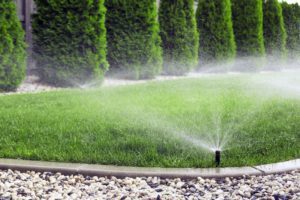
How Long to Water Lawn in Summer
To keep your lawn lush during summer, it’s essential to water it properly. Aim for 1 to 1.5 inches of water each week, delivered over two to three sessions lasting
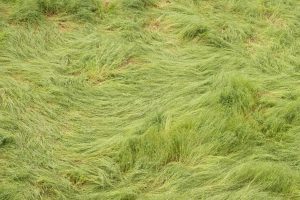
When Does Grass Stop Growing?
As you consider the growth cycle of grass, it’s essential to understand how temperature and environmental conditions dictate when it stops growing. Cool-season grasses, for instance, halt as temperatures drop

How to Get Rid of Clover in Lawn
Just as Hercules faced the intimidating task of cleaning the Augean stables, managing clover in your lawn can seem overwhelming. Yet, with the right strategies, it becomes a manageable task.

How Often and How Long Should You Water Your Lawn
When it comes to watering your lawn, it’s essential to balance timing, frequency, and depth for best health. Aim for about an inch of water per week, ideally split into
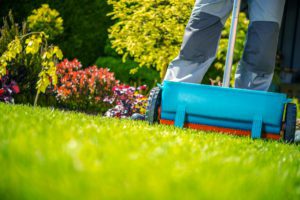
Best Grass Seed for Wisconsin Lawns and How to Choose the Right One
In Wisconsin, selecting the best grass seed mix is essential for a thriving lawn. You’ll want a combination of Kentucky bluegrass, perennial ryegrass, and tall fescue, each chosen for its


